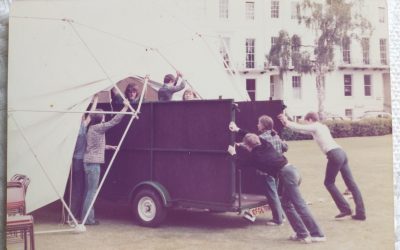A hospital appointment date arrives in the post. Along with the letter is a leaflet pleading, ‘Don’t be a DNA!’ It turns out that ‘a DNA is someone who Did Not Attend hospital for an appointment and did not advise us beforehand. The clinic was ready, the staff were ready, but the patient was a DNA. Last year, this hospital had 56,618 DNA’s.’
Wait a minute – over fifty-six thousand people who didn’t bother to turn up for their appointments, in a single year – that’s over a thousand people every week! A hundred and fifty-five people every day who don’t turn up or call to say they’re not coming, just at one hospital! And yet most of those must be people who went to their doctors because they were worried about something. They can’t all be people who were automatically enrolled in some national screening programme and sent appointments that didn’t interest them. Think of the numbers of DNAs when multiplied across the whole country! When you know people who really depend on the immediate availability of medical care (see previous post) it’s infuriating to think of so much hospital time being wasted by people who don’t turn up.




Although presumably, as with airlines, they know all about DNAs and in fact rely on a certain margin of no-shows which they factor into their calculations, like airlines overbooking flights. Indeed, they seem to be somewhat over-optimistic in this respect – after all, it is an equally common experience to go to a hospital appointment and sit, in a waiting room bursting at the seams, until ages past your designated appointment time, suggesting that the clinic had been woefully overbooked in the first place. So perhaps their DNA figures, projected or actual, are not all that accurate.
xxx
Heavens, how cynical the young are today!
But if the clinic waiting rooms are already bulging at the seams, as you describe, why would the hospital be embarking on a campaign of making many more people resolve to keep their appointments? It is all very mysterious.
Plenty of pessimism in the Aeneid.
I agree with Froggy – some hospitals take this well in their stride. I have a hosp. appointment twice a year, always arrive punctually but rarely wait less than 3/4 hour to see doctor. My secret plan is to leave once I’ve been waiting for more than an hour but I have never had the nerve to put this into practice.
Still, the paperwork must add up to a significant amount of wasted time… money… which the NHS can ill afford.
I’m intrigued by this concept of deliberate over-booking. I think I’ll start applying it to the sale of tickets for my own concerts.
I shall sell twice as many tickets as there are seats, so that when hundreds of eager ….. oh no, wait.
The idea that one hospital has 155 no-shows per day is pretty implausible, even on the (reasonable) hypothesis that the appointments are overbooked. However, so long as the hospital attaches no value to one scarce resource (the time wasted by patients in queuing) and an infinite value to the other (time wasted by the hospital providing for a no-show) they will always ensure that waiting rooms are full. The way to extend this to concerts is to decide whether you are more concerned by a few empty seats or by having to discount ticket prices.
In airlines, and trains, seats that are booked a long time in advance or with inflexible travel times, are much cheaper (it is valuable to recover part of the fixed cost of flying the plane, if they cannot get the full price). If the hall is exactly full when tickets are sold in a conventional manner, the EasyJet model needn’t come into play.